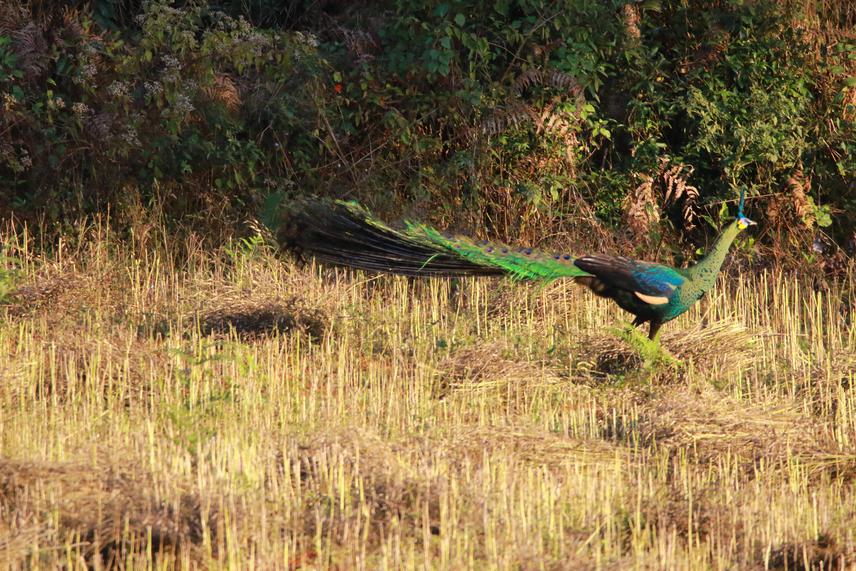Nay Myo Shwe
Other projects
Most remaining Green Peafowl populations in Myanmar are recorded outside Protected Areas, in small forest fragments surrounded by low intensity agricultural landscape. In those area protection relies on the civil society and on the religious influence of local Buddhist monasteries. One such case is the PweHla community (South-Shan state) where an estimate 22 peafowl are found. However, following economic development, agricultural practices are changing in the area threatening all remaining wild species. The aim is therefore to develop long term management by extending the species survey, working with local communities controlling their change in crop type and use of pesticide.

Male Peafowl. ©Nay Myo Shwe.
The work is aiming to elaborate and implement a long term management plan for Green Peafowl in the PweHla area in collaboration with the local civil society network (PHECAD) and the local Monastery extending the species survey for viable populations in the surrounding areas and focusing on the education of school kids and the local farmer community by using Green Peafowl as a flagship species to develop a species conservation approach for the area by regulating long-term agricultural practices.
The management suggested will be divided in two major parts. First, small and large scale survey will contribute in species long-term management: 1) maintaining the ongoing peafowl detailed survey over the whole PweHla area every two years. Those data will assist monitoring the population status and therefore the effectiveness of the management actions undertaken. The survey will also provide detailed information on the species use of different crop and how it links with the changes in crop type and the increasing use of pesticides. 2) Monitoring a larger area will provide details on other populations inhabiting other habitat fragments for which connectivity can be developed on the long term.
Second, the outreach activities will focus on: 1) Assisting local farmers in managing their crop, regulating the use of chemicals, and suggesting the use of alternative pest control methods based on the results from surveys. 2) Awareness raising program at school and Buddha monastery for long term conservation of species. Talk and drawing competition will apply. Twelve winner pictures will be printed on T-shirts and publish on a calendar to be distributed in the area. 3) Remove pressure by free ranging dogs from the villages and monastery.